The scientist revolutionising paddy cultivation in Kashmir
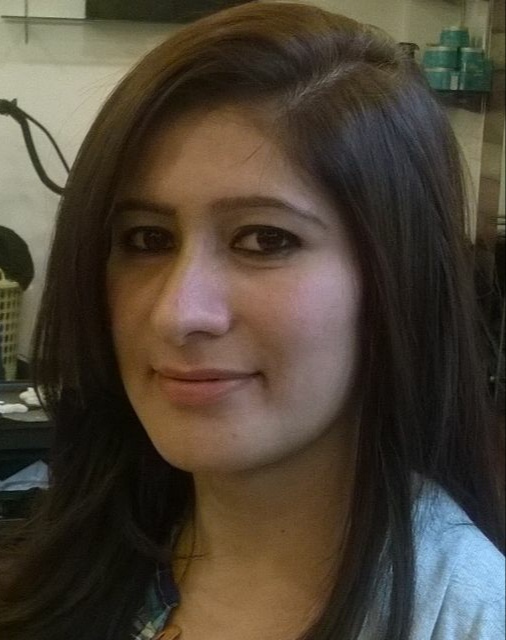
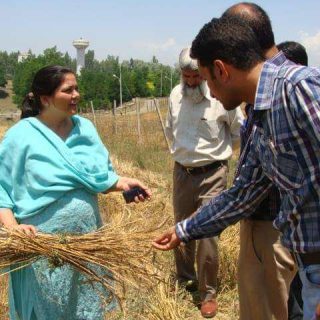
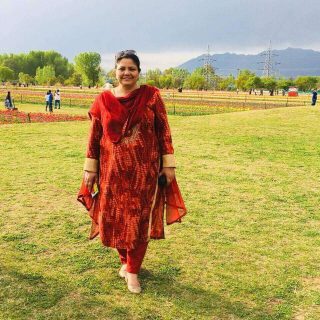
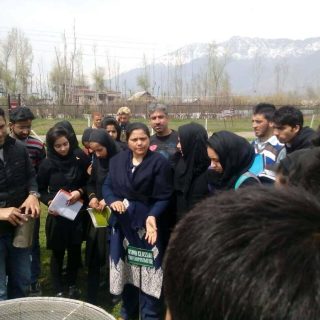
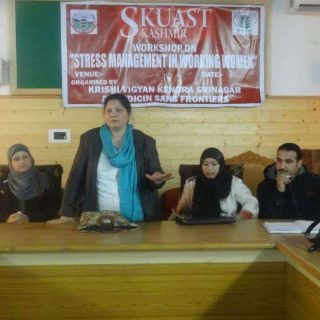
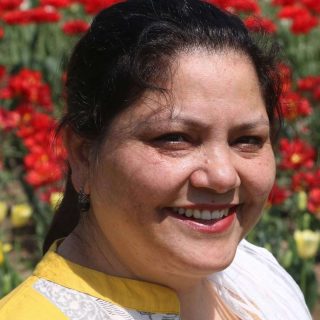
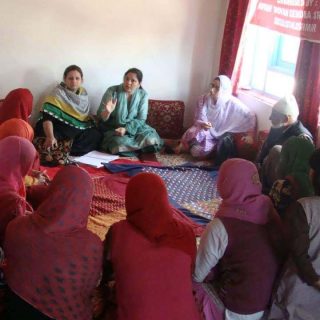
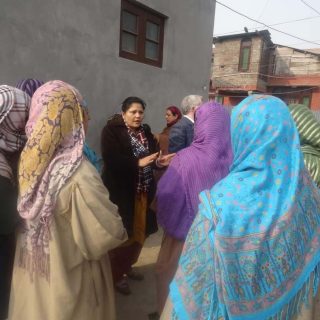
Srinagar: As the long and chilly winter paved way to the pleasant spring of Kashmir, Dr Raihana Habib Kanth resumed her farming routine.
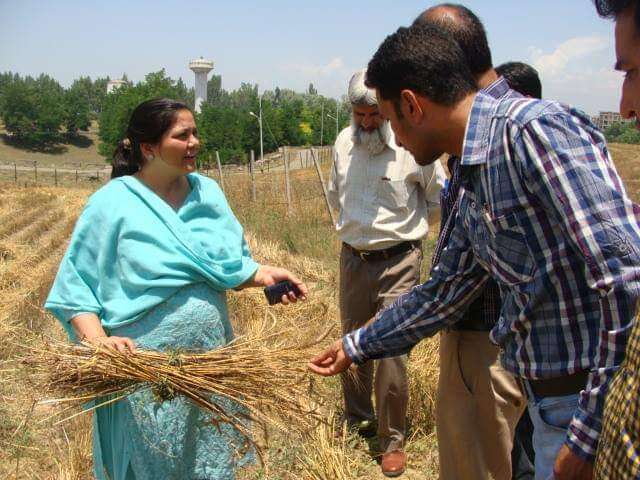
The 53-year-old scientist, who spends most of her time farming and guiding other farmers, is one of the main forces behind the revival of paddy cultivation in the Valley, where paddy fields had greatly shrunk due to investments in the money-making orchards.
From training farmers and students in scientific agricultural methods to introducing new paddy varieties, Dr Kanth’s dedication and passion has completely revolutionised the agricultural practices in Kashmir. She has also touched the lives of hundreds of women by teaching them farming skills and giving them opportunities for work. Her contributions to the agrarian society of the Valley are unparalleled.
A guiding force for students
On the sunny day that we met her in the apple town of Sopore, Dr Kanth was conducting a session for a group of students and farmers at the Wadoora Agriculture College of the Sher-e-Kashmir University of Agricultural Sciences & Technology of Kashmir (SKUAST- K) — the campus she studied at and the one she helped transform. As Professor-cum-Chief Scientist at the Faculty of Agriculture, she spends two hours every morning in the on-campus paddy field for the assessment of crops. “During these daily outings, I guide the labourers and gardeners on the day’s work. Simultaneously I give practical training to my students and local farmers,” said Dr Kanth, as she walks around in her lovely sun hat and sneakers.
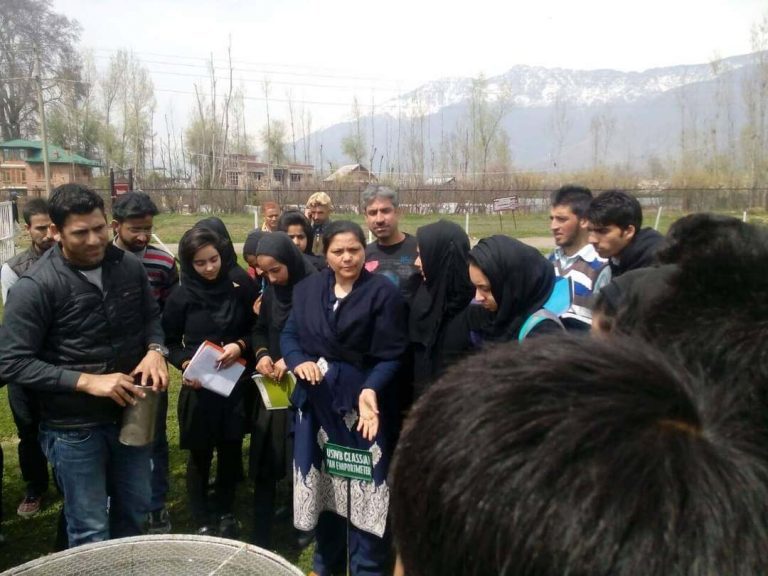
In the 25 years of her career, she has personally mentored over 300 students of agricultural sciences at the graduate and postgraduate levels. She has also guided over 500 women farmers to implement scientific farming practices.
“I always encourage my female students to work hard and respect their own work. I believe only then would others recognise the effort,” she stressed.
Journey through the years
Dr Kanth’s agrarian journey began in 1986 when she joined a BSc course in Agriculture in SKUAST- Srinagar. After completing her graduation, she worked as a Junior Agriculture Assistant with the J&K government’s Agriculture department. At that time, Kashmir was witnessing the emergence of militancy. “Despite the situation, I was supposed to visit far-off villages for the job,” she recalled.
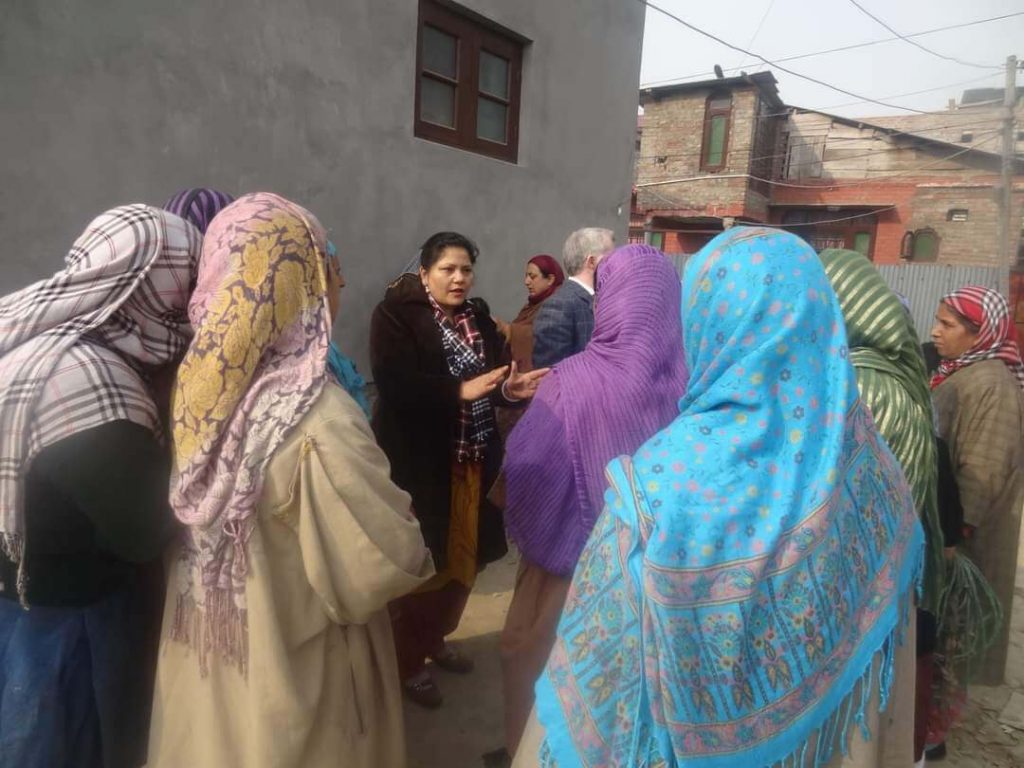
While trying to cope with the challenges of the job, she found that some staffers were indulging in malpractice. “The officials bought vegetable potatoes for Rs 5 per kg from the market and sold them to farmers as potato seeds for Rs 30 per kg,” she said. “I couldn’t take it. I called their bluff and then I quit the job.”
She then pursued her Master’s degree from Punjab Agricultural University in Agricultural Meteorology, a course that examines the impact of weather and climate on various agricultural operations.
“It was a weather forecasting subject and for that we had to understand atmospheric physics,” she explained. After her post-graduation in 1996, she was appointed as a Technical Officer in SKAUST, under the Agro-Met Advisory Services scheme. Her job entailed forecasting the weather, known as agro-advisory. “I was reading crop conditions from different KVKs (Krishi Vigyan Kendras), compiling data for the weather forecast, sending it to the IMD (India Meteorological Department) and disseminating the forecast to media outlets as well,” she said.
At that time advisory was accurate only within the radius of 50 km from the place of study. “This was the case as our topography is not like Punjab. Here in Kashmir, water bodies and hills would impact the reach of the forecast and due to the variability we were not sending forecasts to other districts.” But now, good radar-satellite systems, super computers and advanced software have improved the accuracy of forecasts. “Now we can accurately forecast at the block level,” she averred.
During her agro-advisory stint, she joined the in-service PhD program and was the first student to complete a doctorate in Agronomy from the SKAUST in the year 2000
Back then, she said, agriculture was still a male-dominated field, but now the picture has changed. The breakthrough in her career came in 2005, when she was transferred to the Directorate of Extension within the Agriculture Department as a Junior Scientist.
“Here, there was scope of meeting farmers and travelling to far-flung areas. As the Extension governs all KVKs, we were in contact with all of them. This experience made me bold and outspoken,” she added.
During the same time, a pilot project of the Agricultural Technology Management Agency (ATMA) was launched to formulate farming policies. Scientists had to do Strategic Research and Extension Planning (SREP) themselves in the field and visit villages, meet farmers, attend panchayat meetings and understand their agricultural requirements. She did SREP for Ganderbal and Srinagar districts.
In 2012, when Dr Kant was selected as program coordinator of KVK Budgam, people were surprised to see a woman in-charge. “Many wondered what a woman would do there,” she said with a smile. “But since I already had ample experience with KVKs, it was a cakewalk for me.” With a total of five women and two male members, KVK Budgam came to be known as a ‘female KVK’. In 2012, the Ministry of Earth Sciences merged with IMD and became Grameen Krishi Mausam Seva. Dr Kant served as its principal nodal officer in Kashmir from 2015 to 2018.
The beginning of a movement
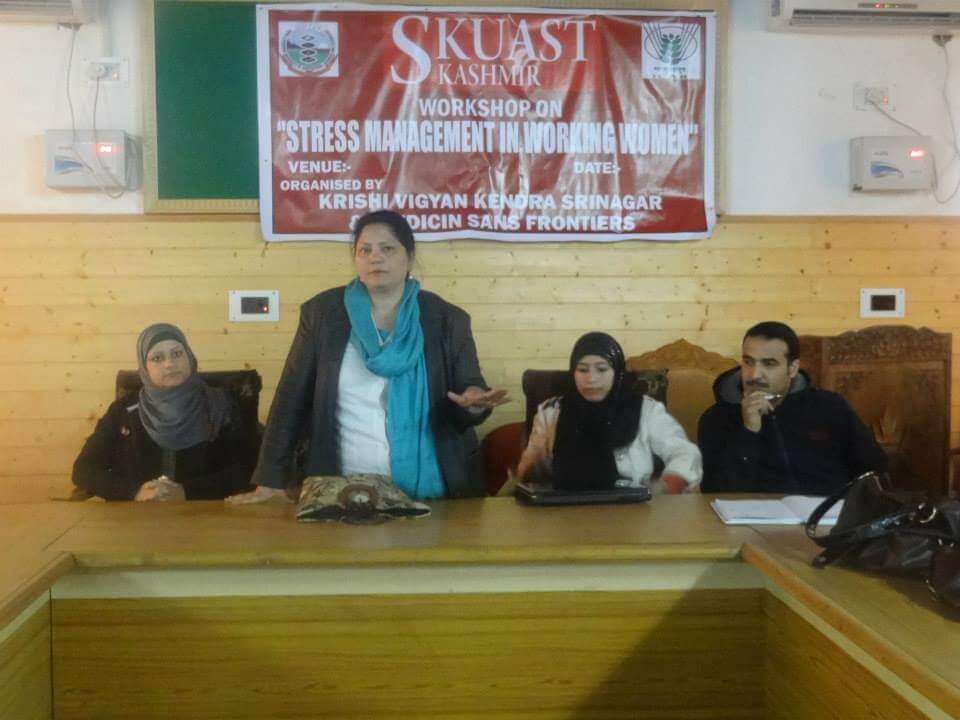
In 2015, Dr Kanth went back to her alma mater, when she joined the Faculty of Agriculture, as Head of Department of Agronomy in Wadoora Agriculture College. Coincidently, a large part of the Wadoora campus was demilitarised just before her arrival, thus marking a shift in campus. “When I went there, it was still an under-graduate campus,” she said. “In the same year, master’s and doctorate programs were started. Once that happened, I had to make a paddy farm for my post-graduate and PhD students.”
This on-campus paddy field was the beginning of a massive transformation in the agricultural practices of the area. Dr Kanth chose 31.5 acres from the site of a defunct high-density horticulture project for the field.
“It was a challenge to transform that piece of land with less staff and inadequate facilities,” she said. “During tilling we found glass bottles, rocks, plastic and other things, but we managed to level it.”
When things looked good to go, drought hit the Valley. For the first time in many years, the community faced drought during the peak farming season. “We pumped water from the Pohru Nallah (water canal) which passes through the area,” she recalled. “We also released the water to a few drought-hit farmlands outside the campus.”
This initiative became a motivation for others. Many abandoned paddy fields soon got revived. Within a year, Dr Kanth’s campus paddy plot became a nursery of new paddy varieties. “We take seeds from the field, process and clean them, before labelling and selling them to farmers,” she informed. “But since farmers wouldn’t buy easily from us, we called them for field trips to introduce them to the new varieties.”
The next year, she introduced a variety of Kashmiri Basmati, named ‘Poosa Sogand’. “In Agronomy, I have three mandates — research, teaching and extension,” she said. “In extension, I train farmers in the use of fertilisers in their fields according to climate change and seed variety.” Dr Kanth also spreads awareness on the right use of technology. “In paddy cultivation, the system of rice intensification has to be adopted in which we have less input and more yield.”
She has helped implement over a dozen government schemes and also helped in the formation of self-help groups in the area. In Gassu village on the outskirts of Srinagar, she has given training on strawberry cultivation and processing. Similarly, in Sitaharan village of Budgam she has trained farmers for organic potato production, potato seed production and off season pea and maize cultivation.
Empowering women
While changing the farming scene in Kashmir, Dr Kanth is also working for the welfare of women farmers.
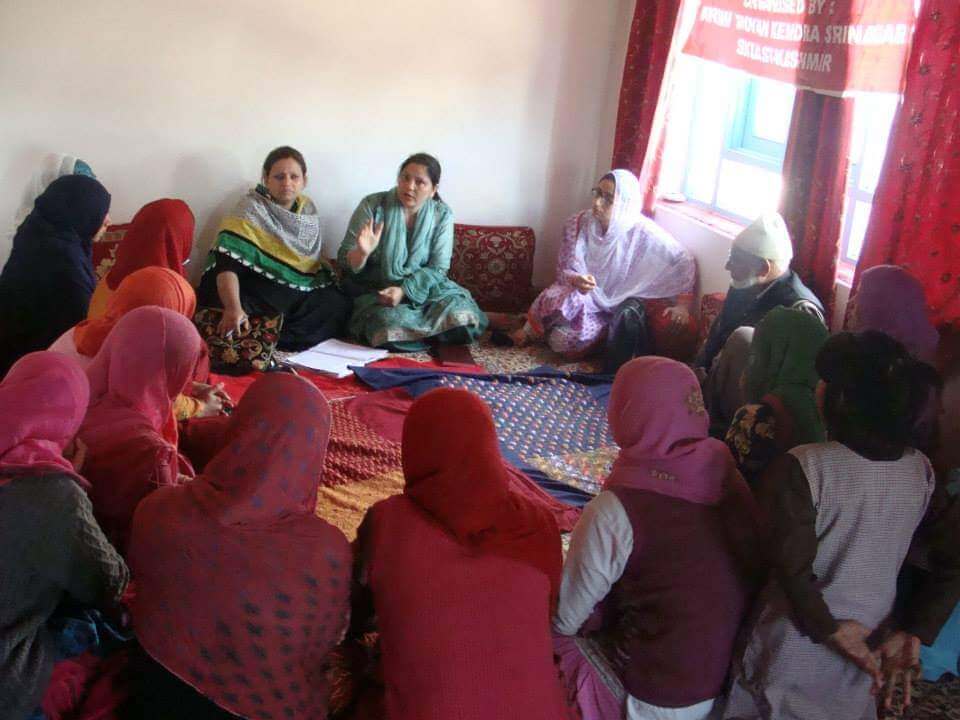
In a discussion with women farmers
“We encourage women farmers to come to our campus and cut the grass free of cost for their livestock,” she said.
“In fact, in order to empower the local economy, we engage around 80 percent of women for harvesting, weeding and other works.” She has also imparted vocational training in collaboration with financial institutions on food preservation, stitching and tailoring, knitting, floral decoration and bakery, thus helping many women gain financial independence. She has worked with farmers, mostly females, on skill development programs in mushroom cultivation, poultry, vermicomposting, seed production and waste management.
She maintained that women in the agricultural profession face huge challenges and often lack the right kind of support. “The employment environment can be hostile to women scientists,” she said. “Sometimes female students even refuse to go for postdoctoral fellowships and for research programs due to lack of support from families and at the institutional level.”
Dr Kanth added that in the future, she would like to contribute more in agricultural science, make it more women-friendly, and focus on agri-entrepreneurship. “When I joined the agronomy department, farmers were still into traditional agricultural practices, without any knowledge of the impact of weather,” she said. “They used to laugh at us initially. But eventually they started believing in us. People became weather-wise rather than otherwise.”
